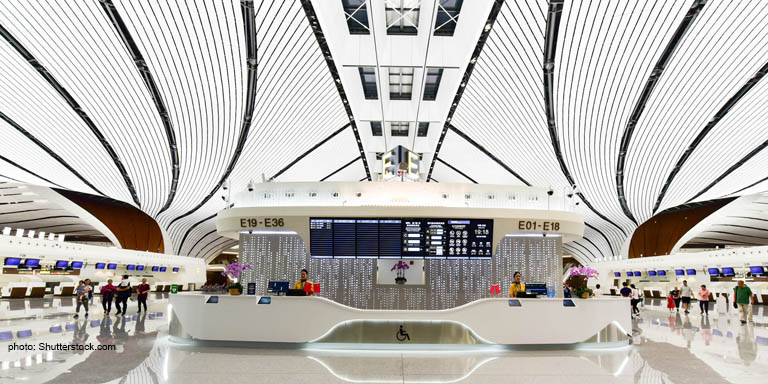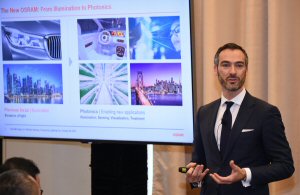
A steady drop in the price of work-horse LED units, pressure to cut down on energy use and the massive business potential created by technologies such as the Internet of Things (IoT) are moving the lighting industry up the value chain.Addressing the seminar “Creating Unforgettable Digital Experiences” during the HKTDC Hong Kong International Lighting Fair in October, Wilhelm Nehring, CEO at OSRAM Digital, said the lighting industry comprised much more than illumination – it embraces such fields as safety, connectivity, mobility and agriculture. Lighting systems play a critical role in smart buildings, he said. Their siting on a ceiling offers a bird’s-eye view of spaces and the systems comprise a mesh network connected to the power grid. In agriculture, LED-driven farming effects a 25% increase in output, 50% rise in efficiency, 75% lower land occupation and 60% reduction in water and fertiliser use. Such systems are ideal for urban farming and are expanding at 50% a year.
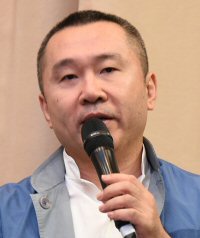
Mr Nehring pointed to the innovative OSRAM lighting used at Beijing Daxing International Airport (main picture) as an example of digitally focused systems.
Content-driven
JianWei Zheng, Designer and Founder of Lighting Stories (Beijing) Culture & Creative, said lighting was evolving from simply being sets of hardware to becoming a content-driven industry. Building managers can now set up scenarios in lighting systems to influence mood and impact health, as well as addressing practical considerations in workplaces.Roland Müller, CEO of OSRAM China, pointed out that sensing, as well as emission, had become part of the lighting industry. LEDs have become ubiquitous and relatively cheap, making the industry very competitive and putting earnings under pressure. The industry’s future lay in satisfying customer needs – recognising use-cases and meeting them. Another fresh field for the light industry is autonomous driving – infrared emission and sensing is essential in autonomous driving systems.
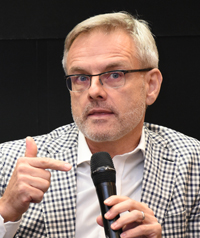
Minna Lai, Director of Research & Development, Traxon e: cue, said the shortening of the product life cycle and expanding range of product applications posed challenges as well as opportunities for lighting companies. The industry’s focus needed to go from simply creating products that emit light to meeting customer expectations. Wilhelm Cheng, Managing Director, Prosperity Group said the emergence of smart lighting was changing the industry, bringing such installations as sky ceilings and embedded lighting – including “invisible illumination” where light sources are diffused by membranes. He pointed to the recently opened K11 Musea in Tsim Sha Tsui, Hong Kong, as an example of innovative lighting, with its moving light-tiles.
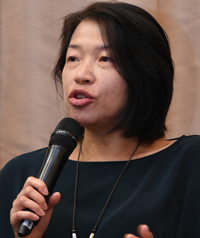
Global expansion opportunity
Brands from Mainland China had the perfect opportunity to develop foreign trade, given the impact of new technologies, David Tam, Overseas Marketing Director, TCL Very Lighting Technology (Huizhou) Co, Ltd, said at a seminar titled “Ecosystem of Connected Living”, also held at the fair. Mainland lighting companies were going through three phases in terms of developing overseas markets, he said. First came acting as an original equipment manufacturer (OEM) for other brands, then selling products through e-commerce platforms.The first two phases suffered from an absence of branding, making it hard for these companies to promote themselves overseas but the “foreign trade 3.0 era” has come. As Internet and e-commerce platforms grow more mature, Mr Tam said the overseas sales performance of companies such as Anker and Xiaomi was more satisfactory. His own company, TCL, initiated its “one brand one home” sales strategy. After its sales of televisions reached the top three worldwide, the company prioritised the development of a smart lighting system that interacts with TVs. In the future, he said, users will be able to control lights by speech commands through their TVs, which in turn will help to boost the sales of lighting products.
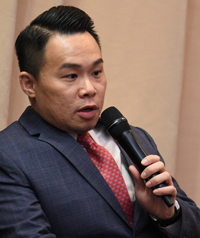
Jin Xin Justing, General Manager of Opple International Business Unit and Head of Smart System Planning at Opple Lighting, noticed that many exhibitors’ smart-lighting products shared similar functionalities. This shows both the potential in the smart-home market as well as the competition manufacturers face. Mr Jin told the seminar audience that the market has ample products with great functions, but lacks products that fulfil users’ needs.
For example, as the mainland population ages, the older generation may not be equipped to control smart household appliances through their phones, so smart household technologies should consider the needs of the elderly. As the mobile phone market grows more saturated, corporations such as Huawei and Xioami are looking to lead the development of smart-home products to grow their profits. Over the last two years, Opple and Huawei have cooperated on the development of new products, successfully promoting reading-light sales through Huawei’s bricks-and-mortar stores and online platforms.
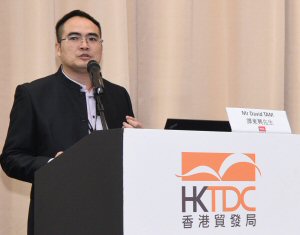
Revenue streams
Bob van der Linden, Senior Director of Global Product Management at Signify (China) Investment Co Ltd, noted that industry profits are being limited by the steady decline in the selling price of global lighting products. In search of new revenue streams, Signify developed human-oriented lighting products that are suitable for schools, fitting rooms and hospitals. Adjustments can be made to school lights according to whether students are looking at slides, paying attention to the teacher or relaxing. Fitting-room lights can create day and night scenarios so customers can see how their clothes look in different situations. The brand also combines Bluetooth beaconing and connected lighting to improve the experience for users.
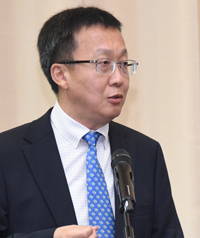
Tony Kong, General Manager of Tuya’s Lighting Division, introduced its artificial intelligence (AI) and IoT platform with research and development, manufacturing and sales capabilities that can help the lighting industry turn traditional products into smart products.Hatta Kazuhiro, Vice Manager, Panasonic R&D Center Suzhou Co Ltd, said the value of connected lighting lies in its ability to improve public health. For example, the elderly often find it hard to sleep well at night, making them mentally fatigued during the day. Quoting research from Japanese scholars, he noted that the elderly will be healthier if they receive sufficient light, so the brand developed what it calls “bright light therapy”, setting indoor lighting to simulate a bright, sunny day with a light intensity much higher than that found in domestic and commercial buildings.Related links HKTDC Hong Kong International Lighting Fair
